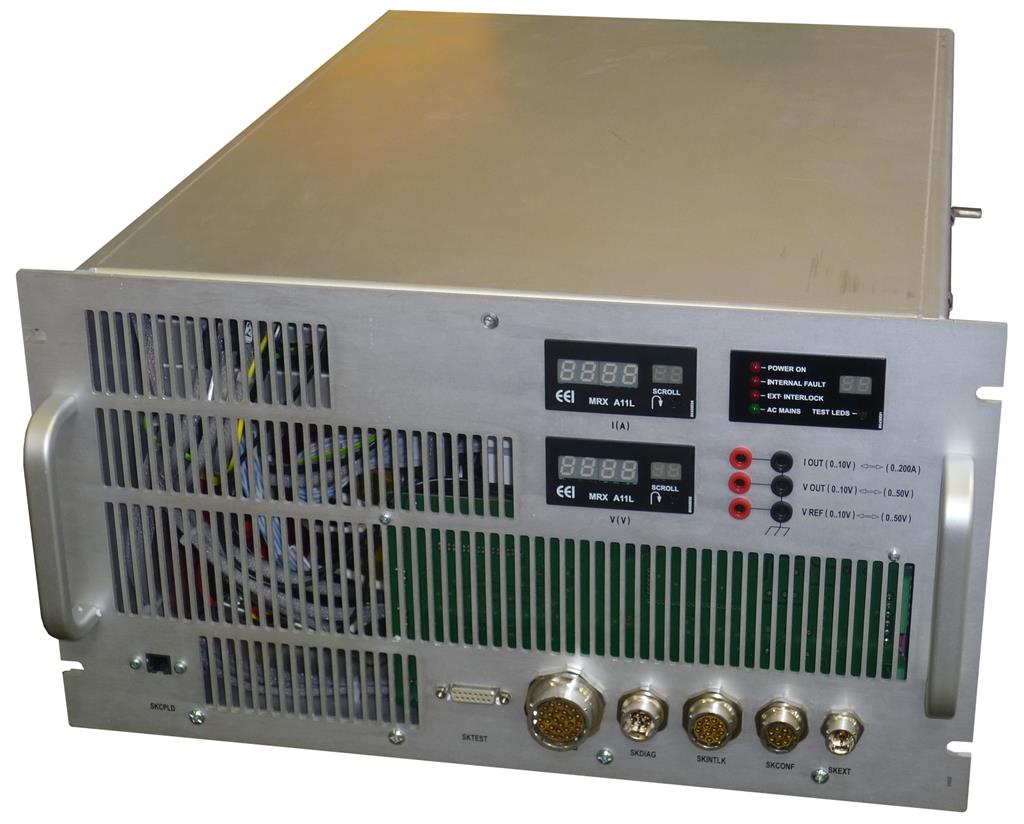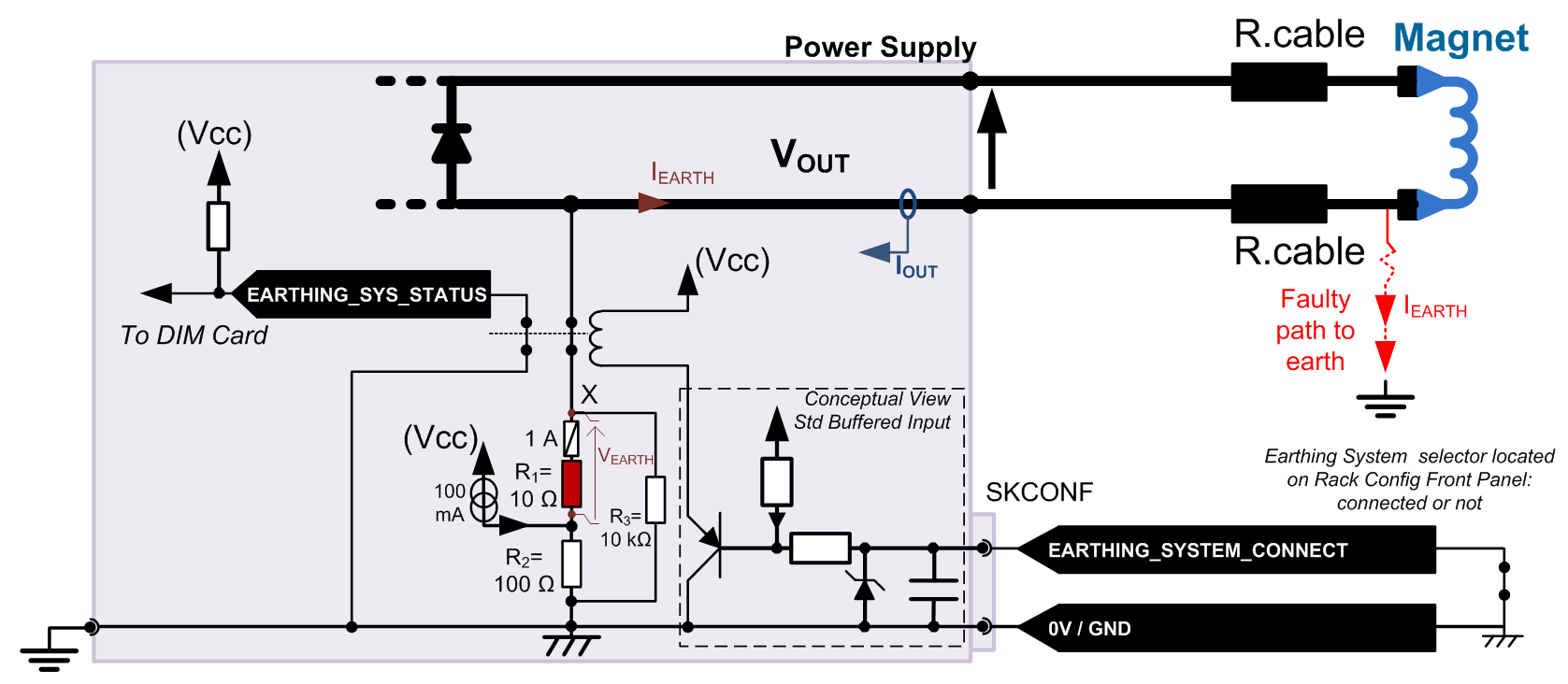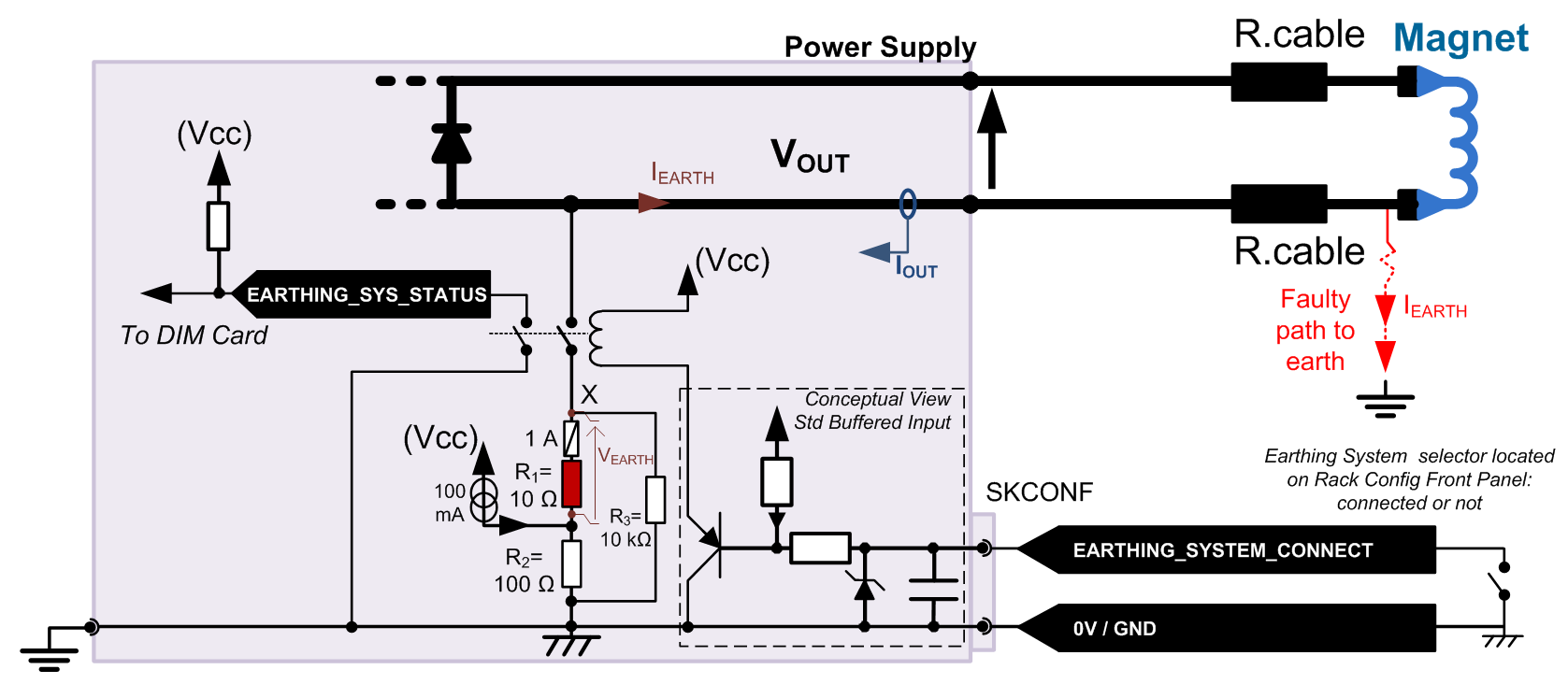|
RPACY/Z / Cobalt |

|
 |
|
 |
|
 |
CERN
|
SY
|
SY-EPC
|
EDMS
|
PROJECTS
|
ODF
/
OOXML
|
|
CERN
|
SY
|
SY-EPC
|
EDMS
|
PROJECTS
|
ODF
/
OOXML
|

|
|
|
|||||||||||||||||||||||||||||||||||||||||||||||||||||||||||||||||||||||||||||||||||||||
| Cobalt | |
| Power In | 3 ~ 230V/20A[18..23A] |
| Power Out | +200Adc +50V |
| Converter Type | 1 Quadrant |
| polarity switch option (RPACZ) | |
| Control type | FGC3 / Ethernet+ |
| Current Accuracy | 50 ppm@ 30 mn |
| 100 ppm@ 24 h | |
| 1000 ppm@ 1 year | |
| (1 ppm=200uA=0.20mA) | |
| Voltage Ripple | 2.0 mVrms@ f=10Hz-50Hz |
| ≤8.0 mVrms@ f=50Hz-150kHz | |
| ≤2.0 mVrms@ f=130kHz-5MHz |
 Design & Operation Responsibles
Design & Operation Responsibles
 Raul BIANCHI
Raul BIANCHI
|
CERN responsible-1 |
 Yves THUREL
Yves THUREL
|
CERN responsible-2, contract Manager |
 Benoit FAVRE
Benoit FAVRE
|
Polarity Switch A2 |
Design history
 A. Troller A. Troller |
Rack design, Integration |
 Power Converter Architecture
Power Converter Architecture
This Power Converter is used in Experiences, Injector Machines to power warm magnets or even Superconductive Magnet, for DC or pulse applications.
Different parts were designed and produced separately, with the option of a Power Converter being finally integrated in a housing rack, with 3 main parts:
- Power Part:
- Power Rack (AC & DC distribution, interconnections)
- Ideally Removable Power Module when suitable
- CERN Digital Controller (FGC3):
- The high level control from and to the Cern Control Room (using Ethernet+ bus)
- The high precision digital current loop (when a voltage source is controlled)
- Collecting and reporting all status, faults, and measurements from all the different parts to the remote services, for diagnostic and operation purposes.
- High Precision Current sensor(s) (DCCTs)
- Measuring DC or pulse current at the required precision.
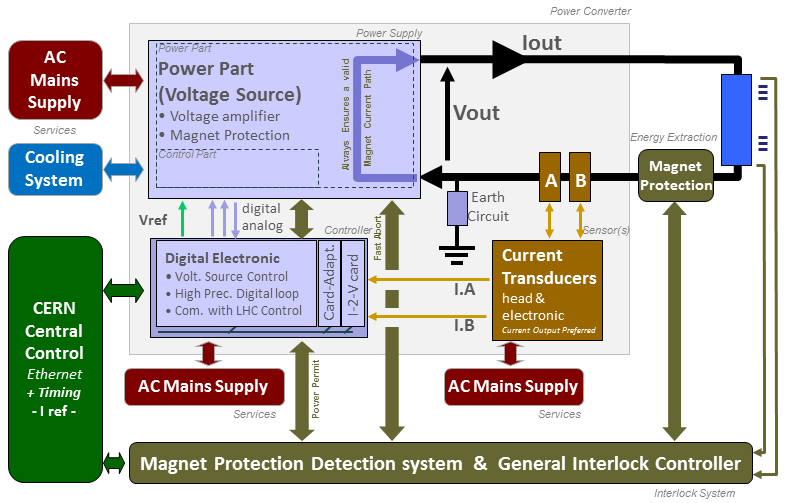
Power Converter simplified Architecture .ppt or .vsdx
 Power Source
Power Source
Voltage Source Power Module is based on a full bridge phase shifted topology.
2 DCCTs can be used for the Power Converter precision current loop, and are located in the Power Rack.
Converter is compatible with 19'' standard dimensions with CERN sliding trays.
| Power In | 3 ~ 230V/20A[18..23A] |
| Power Out | +200Adc +50V |
| Cooling type | Fans |
| Converter Weight | Power Module ............ 50..60 kg |

Power Part simplified Architecture / Topology .edms
Power Part Detailed Architecture / Topology .png
Typical Curves / Measurements
| Output Low Freq. Voltage Ripple < 10 kHz .txt | Ripple Graph vs I.out: 150 Hz, 300 Hz, (.xlsx) |
| [ 50 A; 13 V ] Vout.ripple [0;1] kHz: 40ms | |
| [ 80 A; 20 V ] Vout.ripple [0;1] kHz: 40ms | |
| [100 A; 25 V ] Vout.ripple [0;1] kHz: 40ms | |
| [180 A; 45 V ] Vout.ripple [0;1] kHz: 40ms | |
| Voltage Source Efficiency vs Output Power | Efficiency Graph, (.xlsx) |
| Voltage Source Transfer Function: Vout / Vref | Vref = 0.2 Vpk, on [0.25 Ohms; 3 mH] .png, (.edms) |
 Controller
Controller
Control & regulation principles are summarized in a detailled schematics representating only the part involved in the output current regulation scheme. FGC3 standard control shown below, even if FGC3 can drive a commercial current source.
![]() Standard Configuration
-
Standard Configuration
-
![]() With Polarity Switch Pos.
-
With Polarity Switch Pos.
-
![]() With Polarity Switch Neg
With Polarity Switch Neg
Regulation Control simplified schematic .vsd
High precision current control loop is managed by the digital controller called FGC (Function Generator Controller). This unit includes a high precision Sigma Delta Analog to Digital Converter which digitalize the analog current measurement coming from 1 or 2 Current sensors (DCCTs: DC current Transducer). Precision is then directly relying on sensor precision: current sensors, the ADCs, and the algorithm being used for the regulation loop. Voltage source is then used as a power amplifier, powering the load through a high bandwidth voltage loop.
 Magnet Protection
Magnet Protection
Power Converter is part of magnet protection scheme, even if not directly fully responsible of the monitoring and diagnostic of the superconductive magnet status. Dedicated systems QPS (Quench Protection System) + PIC/WIC (Power/Warm Interlock Controller) can interlock Power Converter if magnet safety requires it.
Power Converter is then expected to:
- Always ensure that external protection system can stop the Power Converter through a safe signal called Fast Abort. This redundant signal uses 2 paths to interlock and stop the converter and its redundancy is checked each time it acts. It directly acts on AC Contactor bobbin, ensuring its opening as required.
- Stop powering the load in safe way (handling the magnet energy even when stopping, through dedicated system called Free Wheeling Diode Safe Paths). This passive system based on different paths using several free-wheeling diodes in the rack provide a safe discharge path for magnet current (energy).
- Monitor Earth current of the total circuit: converter + load (magnet and its DC cables), and take the right action if threshold reached.
- Free Wheeling Diode Safe Paths
The system is based on different paths provided by Free-Wheeling Diodes providing a safe path for magnet current.
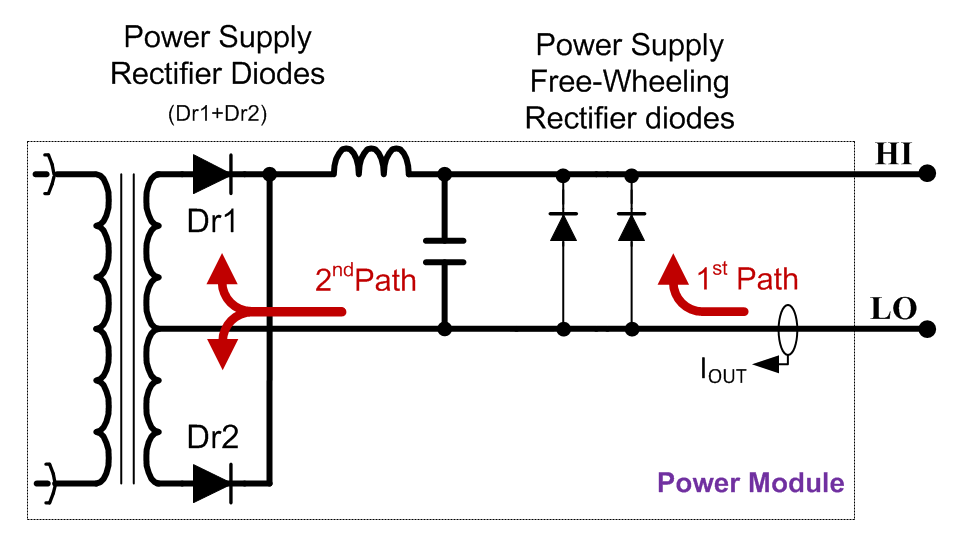
Crowbar System simplified schematic .vsd
- Earth System
Detection system is an active system, since relying on a 100mA current source powering a 100Ohms resistor connected between earth and negative polarity of the Power Converter. A common mode voltage is then created, (100mA x 100Ohms) making possible to detect an earth fault even with converter being OFF. (OFF, not condamned).
If the complete Earth System is intended to be located in the Power Module, its configuration is possible from a direct Burndy connector (SKCONF), to allow the one-for-all confiugration at the level of the rack, and then not losing it once replacing the Power Module (case of failure).
Earthing System
 Connected
-
Connected
-
 Not Connected
Not Connected
Earthing System simplified schematic .vsd
 Power Converter Components .vsd
Power Converter Components .vsd

A power converter is actually a sum of different equipments under several different sections in the SY-EPC group. The modularity is a key factor for easier maintenance with regards to MTTR reduction.
Power Converter Rack can accept up to 3x Power Converters.
- Power Converter 42U Rack including
- Power ModuleHCRMACY001
- A Rack AC Distribution Top Panel providing:
- A Rack Config Panel providing:
- A central Power Rack Equipment Stop Button on one only.
- Individual hardware current limitation for Power Source below.
- Individual earthing system configuration for Power Source below.
- DCCT(s) included in the Power Rack
- 2 DCCTs per Power Converter
- Controller / Electronic Chassis (Type COBALT) including:
- Digital Controller: FGC3 + FGC3-dongle (1x FGC3 / Power Converter)
- Card VS I2V (DCCTs burden included) (1x I2V card / 2x DCCTs) HCRAJEO EDA-02283
- Card VS PSU (1x PSU for 2 FGC3) HCRFAAB EDA-02322
- A Rack Bottom Panel including:
- Interlock System Connections if direct connection on Power Source not sufficient
- AC Rack Main connexion from CERN service
- A Rack DC Grounding System including:
- The capability to safely ground the DC output terminals to ground. This pannel can be located bottom or top of the rack.
 Magnet Types
Magnet Types
| Quadrupoles |
 Machine Installation
Machine Installation
| Air losses | 1x Full Rack @ P.nom (incl. 3x (Power Sources + FGC3+2x DCCTs) + 1x Pol.Sw) | 6000 Watts |
| 1x Power Source @ P.nom | 1700 Watts | |
| 1x Polarity Switch A2 @ I.nom | 60 Watts | |
| 1x Full Reg.FGC3 Chassis(incl. 3x (FGC3+2x DCCTs) | 300 WattsMax.Possible | |
| 1x Fan Rack Kit | 200 Watts | |
| Rack AC&DC Cabling Losses @ P.nom | 300 Watts | |
| HIE Use | 49 Power Converters | |
| Building | Bat 170 |
 Production Contract & Contact History
Production Contract & Contact History
| Power Modules Design & Production | EEI 49 Pc |
| Power Racks Design & Production | CERN 18 Pc |
 Converter Circuit Names
Converter Circuit Names
| TOP | CHARTE | HTML | CSS | Ver : 07-10-2021 15:54:38 | Webmaster : Michel GEORGES. |
